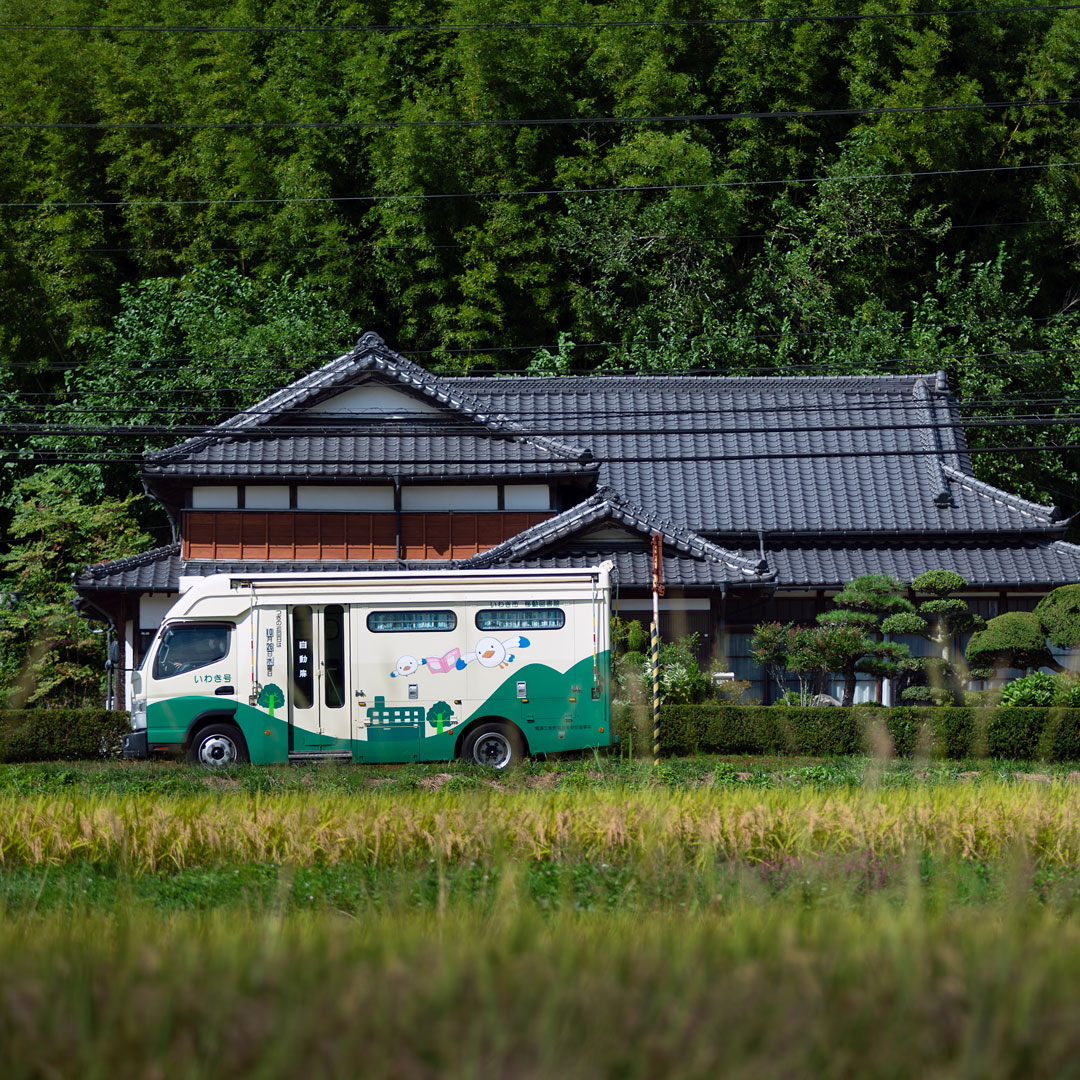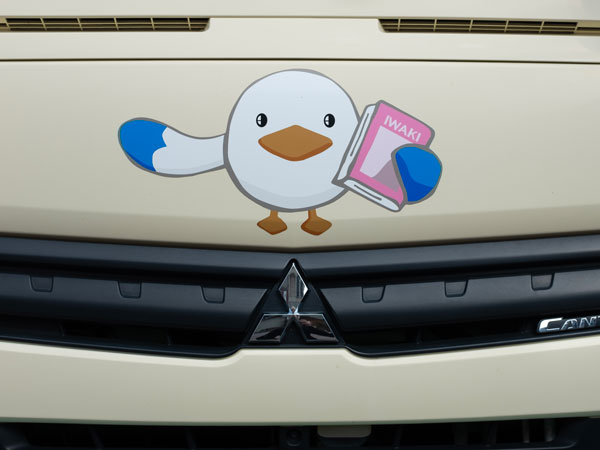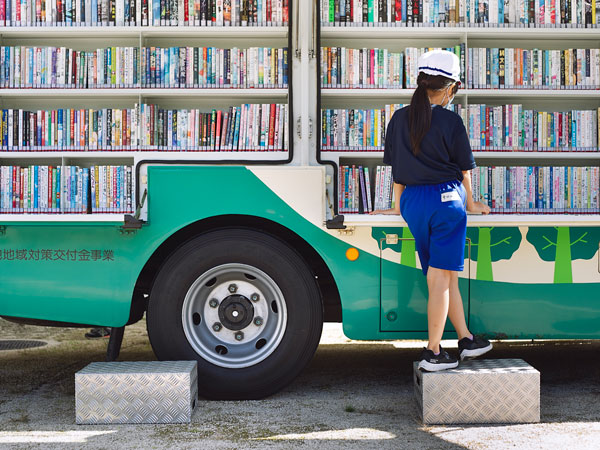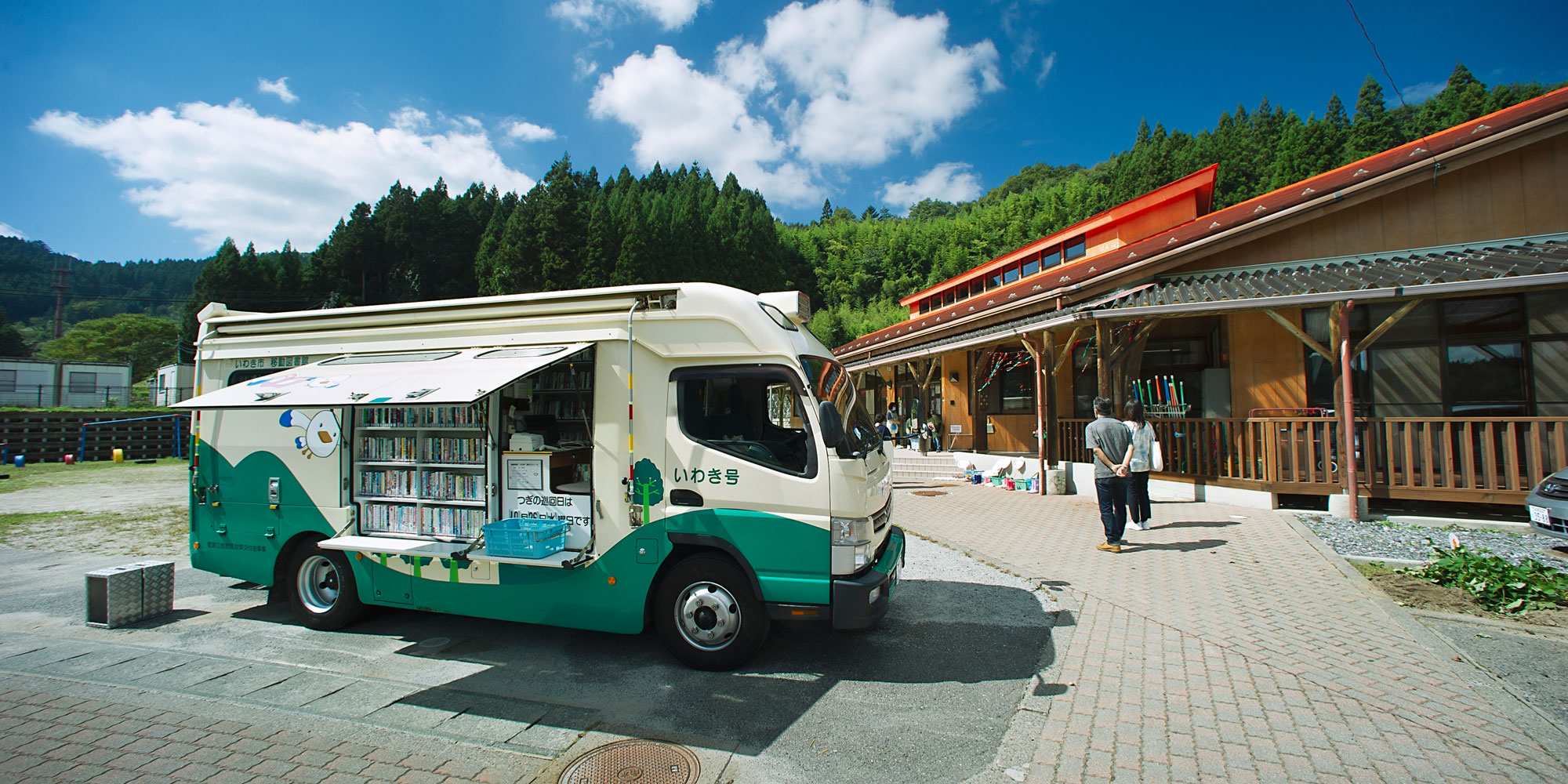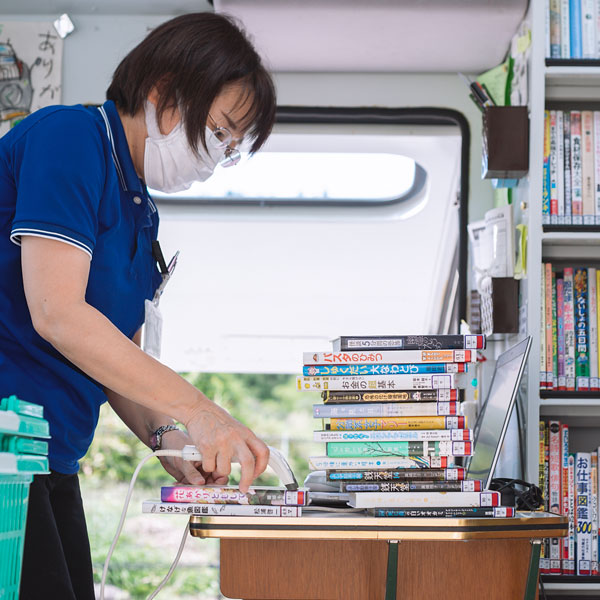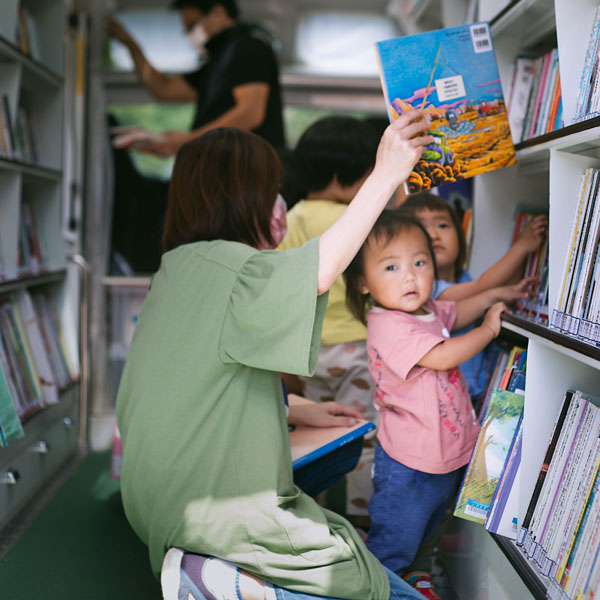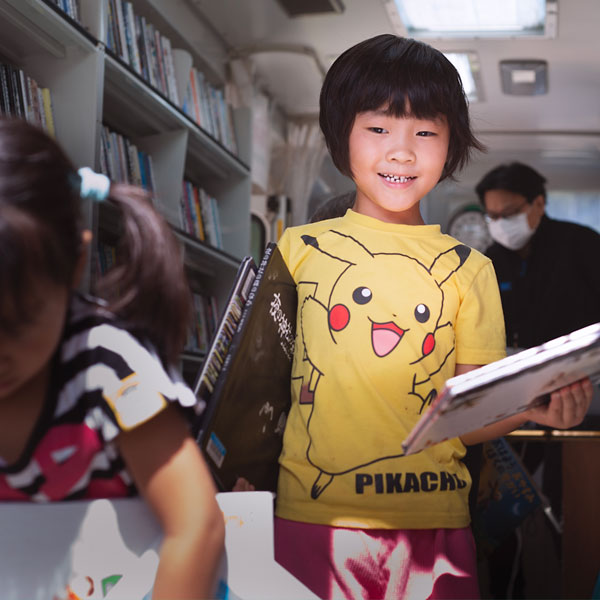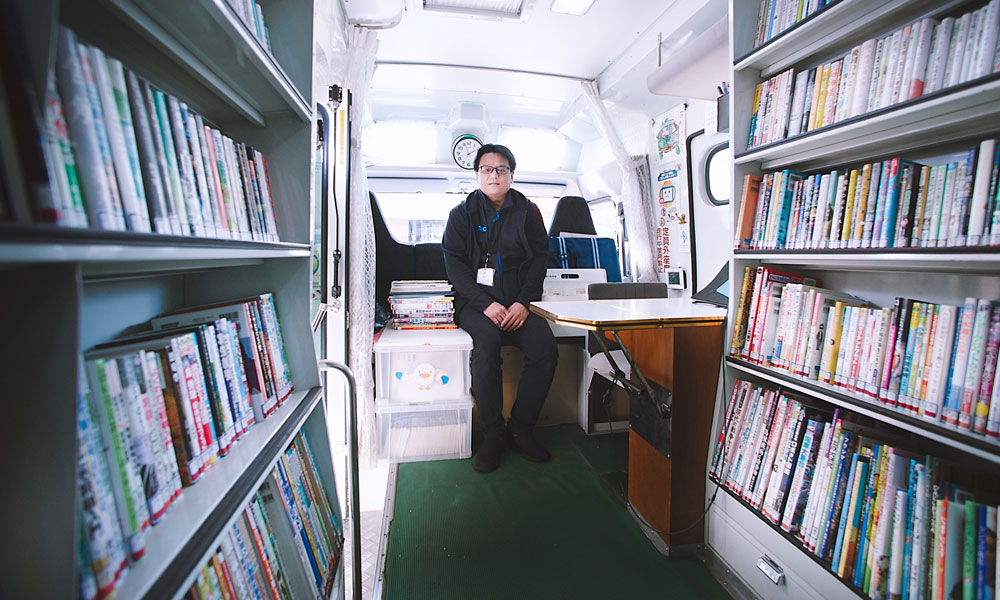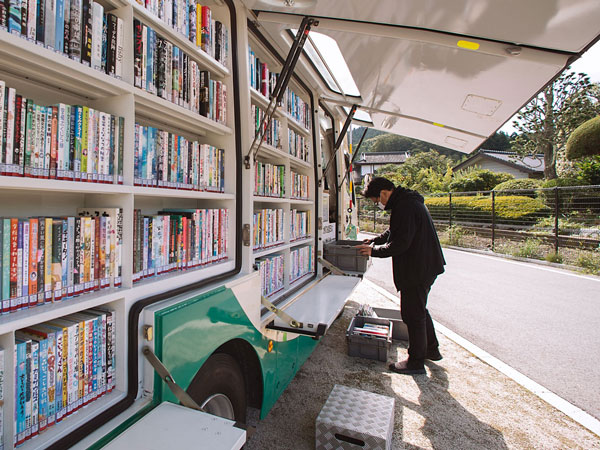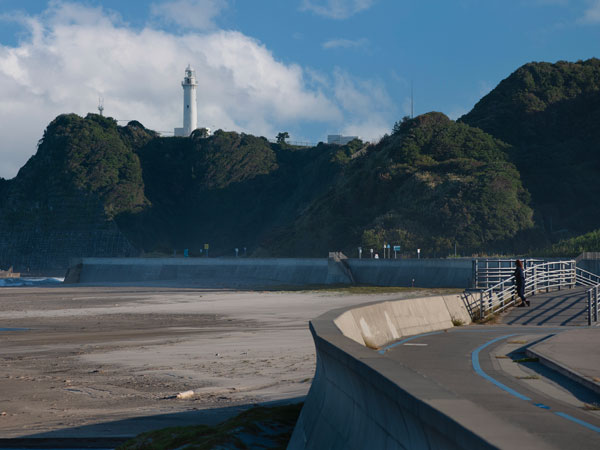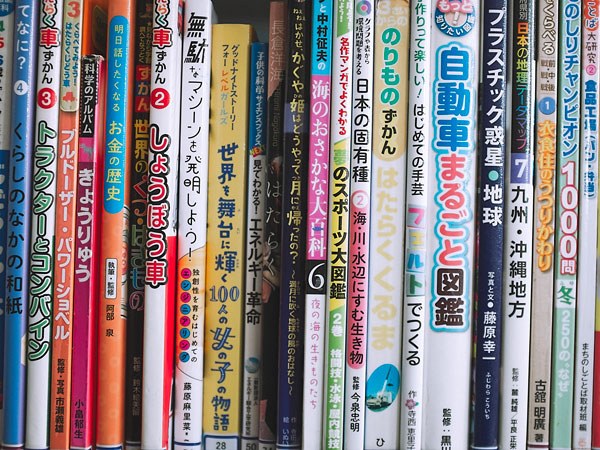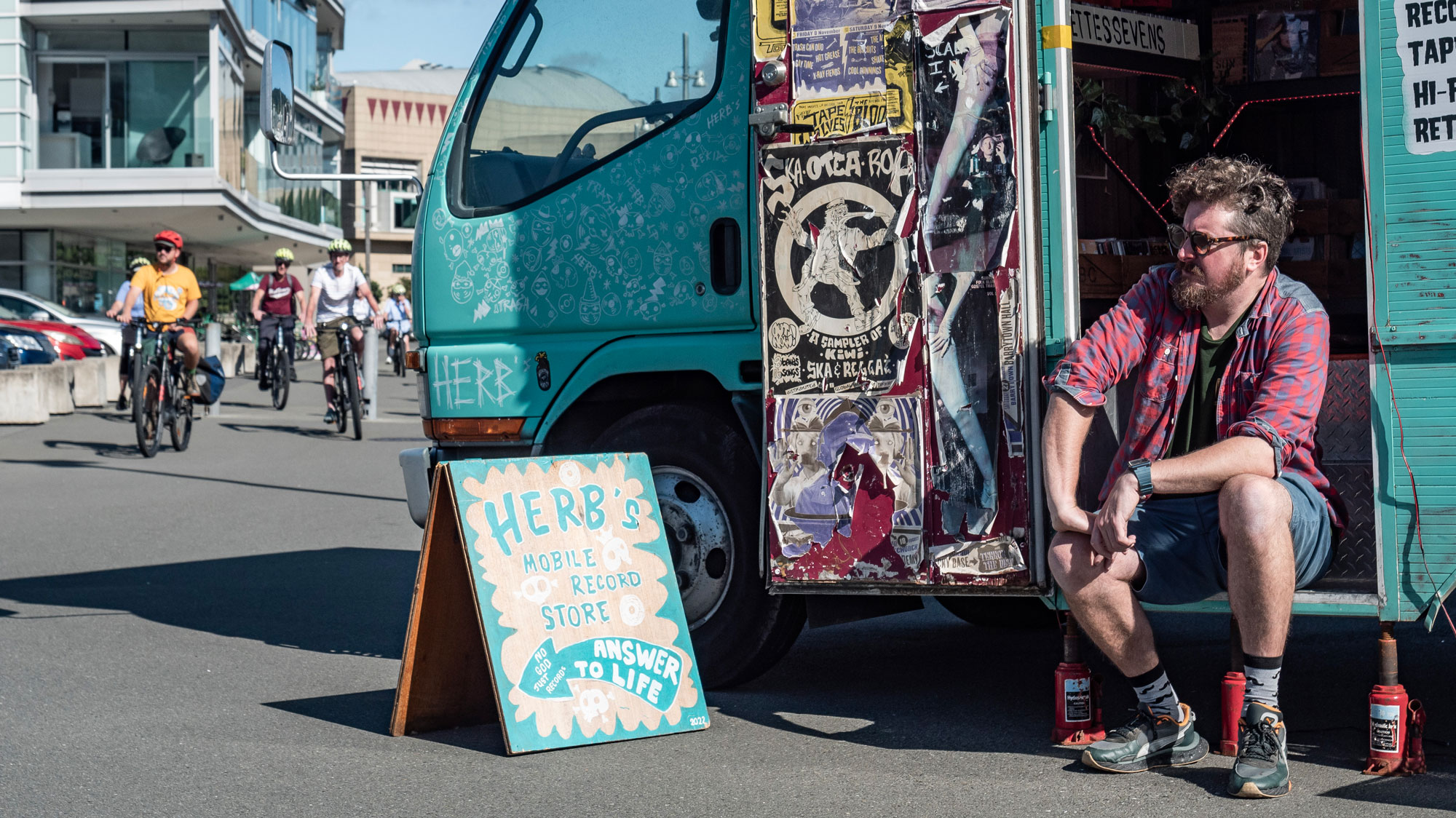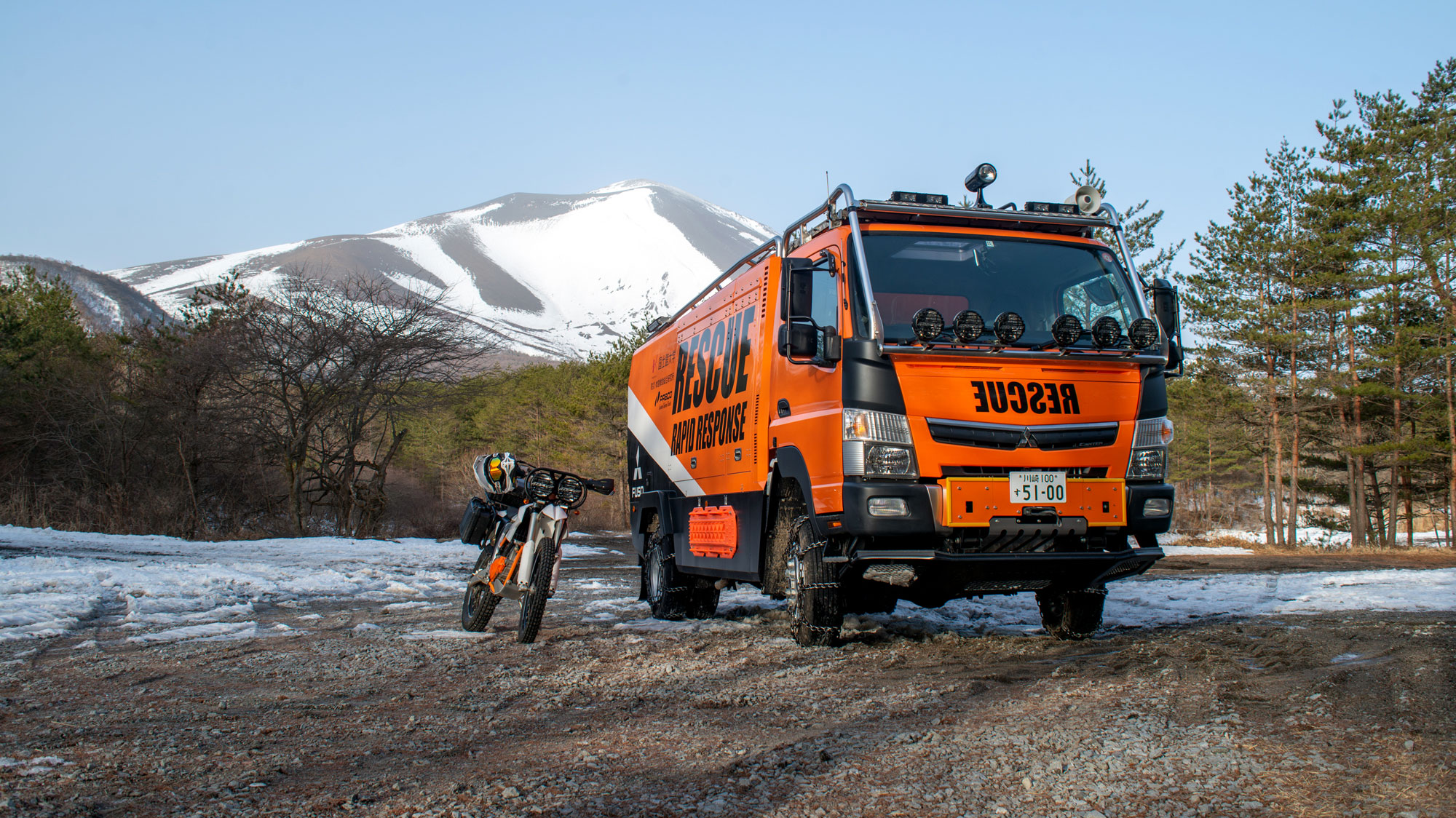
The Iwaki-Go mobile library climbs another steep incline, hauling its precious cargo of books deeper into the Fukushima mountains. Locals acknowledge the distinctive FUSO Canter as it passes; the vehicle is a familiar sight in this area of Iwaki, located 20-minutes from the Pacific coast.
The first stop on today’s run is Miwa Elementary and Junior High School. Driver Hideyuki Okabe and librarian Yoko Hirayama jump out, open the side revealing rows of books, and begin setting up. As they near completion, the quiet ends with the school chime and the rumble of students charging toward the library.
For several minutes, the energy is frenetic; students climbing in and out of the vehicle, excitedly rifling through the shelves. Hideyuki and Yoko interact with the pupils and check out their books, and the class teacher hurries everyone along. Then, after the final student has made their selection, silence resumes—a few moments of respite until the arrival of the next class.

